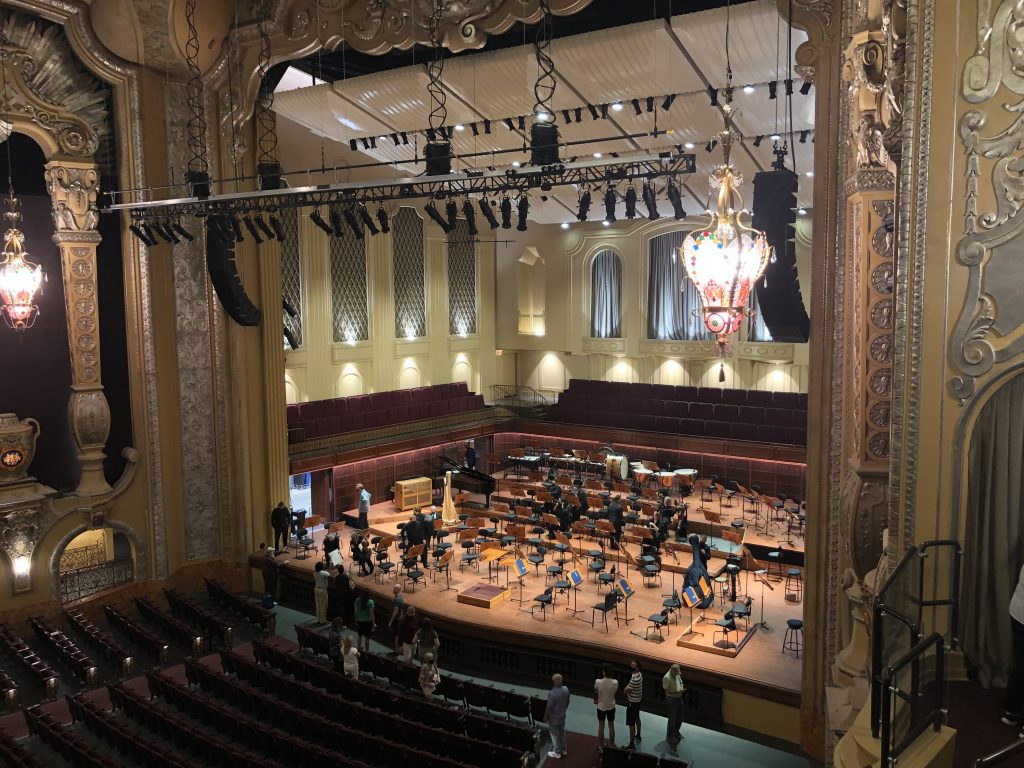The MSO Is Back and Captivates in New Hall
The Milwaukee Symphony Orchestra is back with a performance of contemporary and classic pieces.
It’s good to be back. After missing the Milwaukee Symphony Orchestra’s season opener, I attended the Friday performance of the second program. I was immediately captivated by the new Bradley Symphony Center, with touchless ticketing and elegant new signage that guides attendees to the concert hall. The hall itself is spectacular. It’s a triumph of restoration and engineering that will be a source of Milwaukee pride for years to come.
First up was “Aeriality”, by Icelandic composer Anna Thorvaldsdottir. Her score was a feast for the ears, with quiet winding woodwind lines tickling the ear and sustained pitch centers building anticipation. According to the program note, the hazy, tenuous soundscapes were meant to portray the feeling of gliding through air. In this new performance space, every detail was audible. Eventually the music blossomed into warmth before sinking back toward an arresting coda where it petered out into white noise. During the applause, Maestro Ken-David Masur gave fist bumps to the first chairs, rather than the customary handshakes. It managed to be both a signal of safety, and modernity befitting the piece.
It managed to be both a signal of safety, and modernity befitting the piece, as if to say, “We just did something really cool!”
After intermission we were treated to Rachmaninoff’s Symphonic Dances. The composer’s last piece is one of his most unique, with an extended solo for alto saxophone and sometimes questionable application of the title “dance.” I enjoyed the first movement’s cinematic opening (it always evokes a horse ride through snowy forests for me), and the woodwind-featured slow section with the alto sax was gorgeous. I also loved the winding down of the melody in the low strings and low winds, one of Rachmaninoff’s signature sounds. The final statement of the main theme created a vivid, twinkling moment.
The second movement of this set is the most straightforward dance, with a recognizable oom-pah in triple time. But the emotional tone is strange, somewhere between bittersweet and grotesque. The woodwinds continued to excel, transitioning seamlessly as they traded solos. In the blooms of complicated sentiment, Masur restrained the group just enough so that they felt poised to break out at any moment. He also made sure that every little brushstroke was accounted for in each iteration of the main theme, every little trace of this movement’s anxious energy. The biggest climax showed the volume capabilities of the new hall: HUGE.
The Thorvaldsdottir and Rachmaninoff pieces seemed to acknowledge our collective mix of anticipation and dread. We have felt adrift in an endless era of isolation, safety protocols and empty streets. Occasionally there were glimmers of hope as we asked ourselves, “Is it safe to visit my friends now? Is it safe to travel? To go to a concert?” And now we’re making progress but there’s a long road ahead, because we’ve forgotten how to dance.
I absolutely recommend that any fan of music come to a concert in this new space and experience an authentic orchestral sound. It’s glorious. Since March 2020, the whole enterprise of public performance has felt fragile, in danger of slipping away. Now it’s back; come enjoy it.
Review
-
Ouzo Café Is Classic Greek Fare
 May 23rd, 2024 by Cari Taylor-Carlson
May 23rd, 2024 by Cari Taylor-Carlson
-
‘The Treasurer’ a Darkly Funny Family Play
 Apr 29th, 2024 by Dominique Paul Noth
Apr 29th, 2024 by Dominique Paul Noth
-
Anmol Is All About the Spices
 Apr 28th, 2024 by Cari Taylor-Carlson
Apr 28th, 2024 by Cari Taylor-Carlson






















Thank you for this very competent and encouraging review.